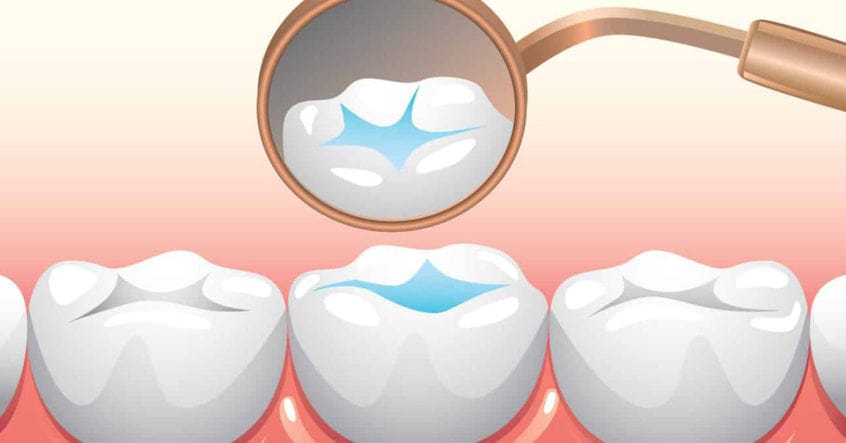
It is a substance that is applied to the teeth ‘biting surface to protect the tooth from decay.
The sealant is applied to the biting surface of the tooth. It fills deep grooves and dimples on the surface of the tooth, which cannot be cleaned with a toothbrush and is like a reservoir for a variety of cardiac-inducing bacteria. Closing these sites with sealant reduces the risk of developing caries, as sealant creates a barrier between the tooth and an adverse environment.
The tooth on which the sealant is planned to be placed must be fully healthy and “hatched.” The sealants shall not be placed on a tooth affected by caries or on a tooth the biting surface of which has already been sealed.
Most often, silants are applied to children’s teeth. The ideal time for applying silants is:
Sealants can also be applied to adult teeth if they are at high risk of caries, increased rates of sugar use, xerostomy (dry mouth) from medication or radiotherapy. (Norman O. Harris, 2014).
Keeping a close eye on your oral health and following daily hygiene habits can keep sealants in service for years.
Reminds me that a baby should visit a dental hygienist once a half-year, then he can also assess whether he or she needs to renew the silant.
The application of sealants is not paid for by the State!